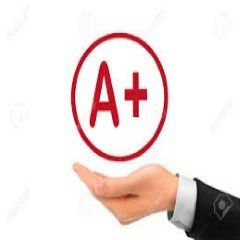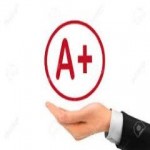Econ 355 Final Exam Complete Solutioncorrect answers
Econ 355 final exam solution correct answers
PART A: Answer all 4 questions. Each question is worth 5 marks.
1. The production process for Bicycles can be described as taking Components and adding value
to transform these into a Bicycle. The Home country applies a 20% import tari¤ at both stages
of the production process: C = B = 20%. Comment on the E¤ective Rate of Protection on
Bicycles for the case where (i) Home is a small country with respect to both Components and
Bicycles, (ii) Home is a small country with respect to Components and a large country with
respect to Bicycles, and (iii) Home is a large country with respect to Components and a small
country with respect to Bicycles.
2. Consider a world with two goods, Cloth (C) and Food (F). There are 2 countries, Home and
Foreign. Home has a comparative advantage/is e¢ cient in the production of Cloth. Capital (K) is
speci
c to the production of Cloth, Land (T) is speci
c to the production of Food and Labour (L)
is freely mobile and required for the production of both goods. If Homes Labour force increases
from L to ^L; use a graph to show what happens to the Home wage and employment in both
industries when PC and PF do not change. Explain what will happen to the earnings/returns to
all 3 factors, Labour, Capital, and Land.
3. Firm A from Home and
rm B from Foreign compete in the world market for large water
turbines (selling to other countries in the world). The world market is not large enough to
support two
rms. Explain whether, and under what conditions, the Home country may be able
to employ strategic trade policy in a way that will work to the advantage of Firm A and be
welfare-enhancing for Home.
4. Home is a small country with a monopoly
rm operating in the import-competing industry. The
Home government considers two instruments of trade policy: a tari¤ t and a quota Q. Both
the tari¤ and the quota lead to the same volume of imports, Qt = Q. Compare the size of the
distortionary losses at Home under these two trade policies.
PART B: Answer all 3 questions. Each question is worth 20 marks.
1. Tari¤s in a Large Country Home is a large country with respect to the market for barber
chairs. The demand for barber chairs in the Home country is Qd = 6000 2P. The supply
of barber chairs at Home is Qs = 2P 2000. The foreign Export Supply of barber chairs is
QXS = 3P 750.
(a) Determine the import demand function for barber chairs in the Home country. What is the
autarky price of a barber chair at Home? Compare this with the autarky price for a barber
chair in the foreign country? (4 marks)
(b) Determine the change to welfare (total surplus) for both the Home and the Foreign country in
moving from autarky to free trade in barber chairs. Which country sees a larger increase in
surplus?. [Hint: it may be useful to sketch the import demand and export supply functions.]
(5 marks)
(c) The Home government is proposing legislation that would see a speci
c tari¤, t = $1000
placed on the import of barber chairs from the foreign country. Determine the price in both
Home (Pt) and Foreign (P t ) with the tari¤ in place as well as the volume of imports, Qt.
(5 marks)
(d) Calculate the net change to welfare for the Home country that will result from the tari¤
described in (c). Suppose that before the Home country can put in place the tari¤ the
Foreign country imposes an export tax e = $1000 on exports of barber chairs out of
Foreign. Explain what, if any, changes this will have to prices in home and foreign and
volume of trade (compare Pt with Pe ; P t with P e and Qt with Qe). Calculate the net
change to Homes welfare when Foreign uses an export tax. (6 marks)
2. Monopolistic Competition Suppose that all
rms in a monopolistically competitive industry
have the same cost structure. The
xed costs of production are F = $50; 000 and the variable
cost (constant marginal cost) is c = $1; 000. The size of the home market is S = 98; 000; and the
size of the foreign market is S = 190; 000. The demand facing an individual
rm is a function
of its own price, P, as well as the average price of its rivals, P:
Q = S
1
n
1
25
(P P)
(a) Explain what type of trade the model of monopolistic competition helps us to describe. (3
marks)
(b) Find the relation between the number of
rms in the market and the average costs of
production (CC curve) for the home market (S = 98; 000) (5 marks)
(c) The equation for the PP curve can be expressed as:
P = 1000 +
25
n
Explain briey what relation this curve is describing. Explain briey the economic rationale
underlying equilibrium in the model of monopolistic competition.
Find the equilibrium in the home market (P and n). (7 marks)
(d) When there is trade between home and foreign, what is the size of the integratedmarket? Use
a graph to show how CC and/or PP change and to describe qualitatively how equilibrium
changes relative to (c). Describe the ways in which consumers in the home market bene
t
from trade. (5 marks)
3. Ricardian Model A Ricardian world economy consists of two countries, Home and Foreign.
There are two production goods, Wheat (W) and Steel (S) and a single factor of production,
labour (L). The technology of production can be described by constant unit-labour requirements
that di¤er across goods and across countries as follows:
Wheat Steel Labour
Home aLW = 3 aLS = 4 L = 1200
Foreign aLW = 1 aLS = 2 L = 800
(a) For which country is the opportunity cost of producing Wheat lowest? Explain. (4 marks)
(b) Use a diagram withWheat on the horizontal axis to show the production possibilities frontier
for Foreign. Be sure to include the values of any intercepts and the slope. (4 marks)
(c) With voluntary trade between Home and Foreign, describe the pattern of specialization
and trade (which goods are produced by each country, which goods are exported by each
country, which goods are imported by each country). (5 marks)
(d) Suppose that in addition to Wheat and Steel, there are two additional goods that are
produced: Radios (R) and Toys (T). Unit labour requirements for these goods are as follows:
aLR = 8, aLR = 12, aLT = 1
2 , aLT = 1
2 . In equilibrium, Homes wage relative to Foreigns is
w
w = 3
4 . Describe the pattern of trade. Now let suppose there are transport costs, z = 40%,
that must be incurred when a good is exported to another country. Determine what, if any
goods, become non-traded. (7 marks)
PART C: Read the following excerpts from a recent article in the New York Times (U.S. Gains in
a Spat With China Over Tari¤sby Annie Lowrey and Keith Bradsher, May 23, 2014).
WASHINGTON — The World Trade Organization sided with the United States on Friday in a
dispute over punitive Chinese tariffs on American exports of cars and sport utility vehicles.
: : :
China imposed antidumping tariffs of 2 to 8.9 percent on American cars and S.U.V.s with an engine displacement of more than 2.5 liters in December 2011, saying that these vehicles were being sold to dealers in China for less than the full cost of manufacturing them. China also imposed additional antisubsidy tariffs of 12.9 percent on largeengine passenger vehicles from General Motors and 6.2 percent on these vehicles, mainly Jeeps, from Chrysler.
Beijing contended that the governmentmanaged bankruptcies of G.M. and Chrysler had the effect of providing subsidies for these manufacturers’ exports.
: : :
The W.T.O. ruling is the third in favor of the United States in recent years. Beijing and Washington have also disagreed on trade terms for broiler chickens, rare earth minerals, tires, steel and auto parts. A separate W.T.O. panel is considering an American complaint that China has subsidized exports of car parts to the United States.
1. (a) Under the articles of the GATT agreement, under what circumstances can oneWTO member
raise import tari¤ rates on goods that are exported by another WTO member? (6 marks)
(b) What is dumping? If American cars and S.U.V.s with an engine displacement of more than
2:5 liters were being sold to dealers in China for less than the price the same vehicles were
sold to dealers in the United States explain, using graphs, whether there is an economic
justi
cation for such action by the American car manufacturer (GeneralMotors or Chrysler).
(7 marks)
(c) Provide a graphical analysis for both the American (Home) and Chinese (Foreign) market
for cars and S.U.V.s with an engine displacement of more than 2:5 liters when the U.S.
provides a production subsidy to car producers and China imposes an anti-subsidy tari¤.
Assume both countries are large and industries are perfectly competitive. Comment on
how your analysis might di¤er if the American industry was assumed to be a monopoly. (7
marks)
Econ 355 Final Exam Complete Solutioncorrect answers
(c) P = 1000+ 25 n describes the pro t-maximizing price of a rm as a function of the number of rms in the industry. There is free entry and exit of rms, in equilibrium rms will enter the industry up to the point where = 0 (or > 0 and if another rm enters < 0). P = AC 1000 + 25 n = 25 49 n + 1000 n = 7 n = 7 ...





Askwilliam
Senior JournalistSell Your Solution Report Solution Support Center
Online Users
-
 Askwilliam
Today
Askwilliam
Today

A+ - Thank you!
Thanks for the positive feedback!